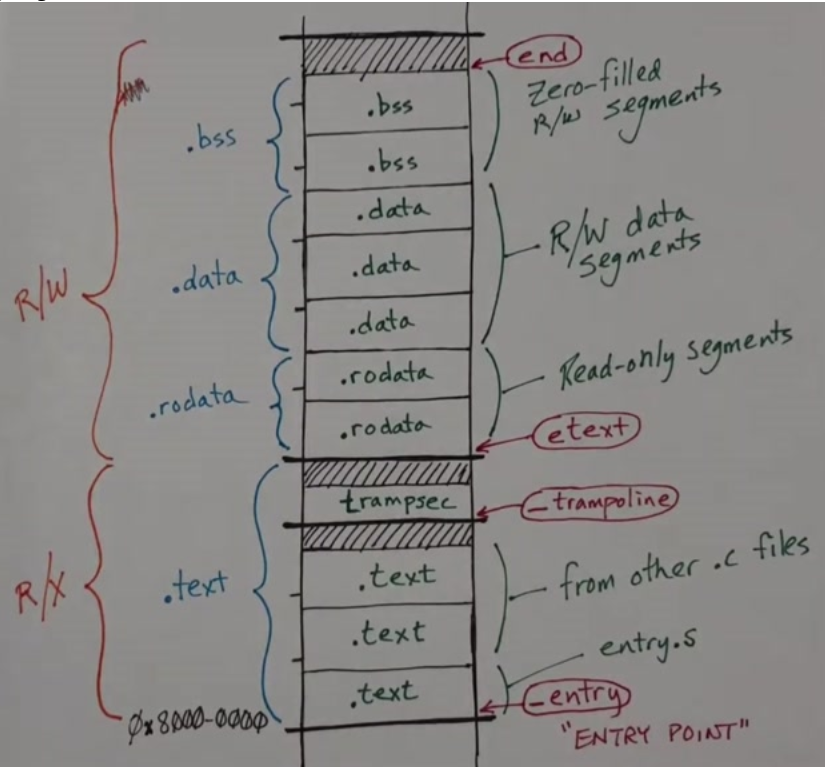Linker Layout
The kernel itself needs its memory laid out in a certain way. This is
done by using a linker script, which is in kernel.ld, that is a set of
directives to the compiler on how to layout the kernel program.
Memory Segments

The kernel is laid out like so, which corresponds to the linker file itself:
OUTPUT_ARCH( "riscv" )
ENTRY( _entry )
SECTIONS
{
/*
* ensure that entry.S / _entry is at 0x80000000,
* where qemu's -kernel jumps.
*/
. = 0x80000000;
.text : {
*(.text .text.*)
. = ALIGN(0x1000);
_trampoline = .;
*(trampsec)
. = ALIGN(0x1000);
ASSERT(. - _trampoline == 0x1000, "error: trampoline larger than one page");
PROVIDE(etext = .);
}
.rodata : {
. = ALIGN(16);
*(.srodata .srodata.*) /* do not need to distinguish this from .rodata */
. = ALIGN(16);
*(.rodata .rodata.*)
}
.data : {
. = ALIGN(16);
*(.sdata .sdata.*) /* do not need to distinguish this from .data */
. = ALIGN(16);
*(.data .data.*)
}
.bss : {
. = ALIGN(16);
*(.sbss .sbss.*) /* do not need to distinguish this from .bss */
. = ALIGN(16);
*(.bss .bss.*)
}
PROVIDE(end = .);
}- it starts the kernel at
0x80000000so that_entrycan jump there. - then it sets up
.textwhich contains trampoline code for the kernel .rodatawhich is aligned to 16-bytes, which stores constants.datawhich stores initialized variables.bsswhich has variables that start as zero- provides an
end, which is used bykallocto denote where heap allocation starts - provides
etextwhich is the end of kernel code
extern char end[]; // first address after kernel. Defined by kernel.ld.Linking Process
entry.ois placed first in memory.- other C files are linked in order after
- with the trampoline in
.text
The compiler doesn’t know the addresses to place everything beforehand — the linker takes care of that.
Booting
- After linking, QEMU loads the kernel into memory.
- The kernel then runs, marking
.textas executable, and.dataas read-write, and restricts access to trampoline and trap frame pages.